LMFP battery homogenization process achieves' important breakthrough '
Jul,26,24
Lithium manganese iron phosphate (LMFP) has become one of the upgrading directions for positive electrode materials. In the industrialization process of LMFP batteries,
the improvement of manufacturing processes is particularly crucial.
Combining performance and cost advantages, lithium manganese iron phosphate (LMFP) has become one of the upgraded directions for positive electrode materials.
According to research data from GGII, the shipment of positive electrode materials in China reached 1.34 million tons in the first half of 2024, a year-on-year increase of 23%.Among them, lithium iron phosphate (LFP) material shipped 930000 tons, a year-on-year increase of 32%, accounting for nearly 70% of the total shipment of positive electrode materials.
The market share of LFP has risen against the trend, and its core advantages still stem from its high safety, good stability, long cycle life, and low cost.
LMFP and LFP share the same olivine structure.
While ensuring cycling stability and high safety, LMFP has a voltage plateau of up to 3.8V (>LFP 3.2V), resulting in a significantly higher energy density and lower cost compared to LFP.
Currently, the competition in the power battery industry continues to escalate, and roll technology, roll products, and roll performance have become the norm in the industry.
For battery companies, further improving product performance and reducing costs through multiple innovations in materials, technology, and processes means they can gain greater market dominance.
Taking mainstream products in the current market as an example, LMFP has an energy density 15% -20% higher than LFP, driving a 5% -10% reduction in battery product costs.
With the continuous advancement of technology and the deepening of industrialization,
it is expected that LMFP will occupy an important position in the future battery market and drive related enterprises in the industry chain to benefit.
LMFP enters the "eve" of industrialization outbreak
Regarded as the next generation upgrade route of LFP, the industrialization of LMFP has been achieved from 0 to 1. In 2023, the shipment volume of LMFP will reach several thousand tons.
Since the beginning of this year, technological breakthroughs and industrialization around LMFP materials have been continuously promoted.
At the beginning of the year, CATL announced an international patent for LMFP technology.
Combined with its previously launched M3P battery (phosphate+ternary doping system),
leading battery companies represented by CATL continue to increase their LMFP technology layout, demonstrating confidence in the development of this new technology field.
In addition to CATL, many battery companies such as BYD, Zhongchuang Chuanghang, EVE Energy, Xingheng Power, Funeng Technology, and Ruipu Lanjun are promoting the research and production of LMFP batteries.
Even Korean battery giants are secretly making efforts to layout LMFP battery products.
Last year, Samsung SDI publicly released an LMFP battery product at the Munich International Auto Show, demonstrating its optimism towards this technological roadmap.
On the material side, recently, companies such as Gree, Hunan Yuneng, Tianjin Guo'an League Guli, Defang Nano, Rongbai Technology, Changzhou Lithium Source,
and Changyuan Lithium Technology have also been actively laying out LMFP positive electrode materials.
Analysis suggests that with the improvement of LMFP process and technology, the comprehensive performance of LMFP batteries in terms of safety, cost, and energy density will receive increasing market attention.
LMFP batteries are also expected to dominate the global battery market in the future.
According to GGII, domestic manganese iron phosphate lithium batteries have entered the eve of mass production, and by 2024,
the shipment of manganese iron phosphate lithium (LMFP) materials will exceed 30000 tons, with a growth rate of over 500%.
Breakthrough in homogenization process is particularly crucial
In the industrialization process of LMFP batteries, the improvement of manufacturing processes is particularly crucial.
From the perspective of material structure, the disadvantages of LMFP are quite significant. Due to the lack of a continuous octahedral network structure in the structure,
the conductivity and lithium ion diffusion performance of LMFP materials are lower than those of LFP, which seriously limits the commercialization process of LMFP.
In response to this defect, the industry currently mainly uses four modification methods to improve the electrochemical performance of LMFP: first, particle nanoscaling; Secondly, encapsulation; Thirdly, bulk doping;
Fourth, compound ternary.
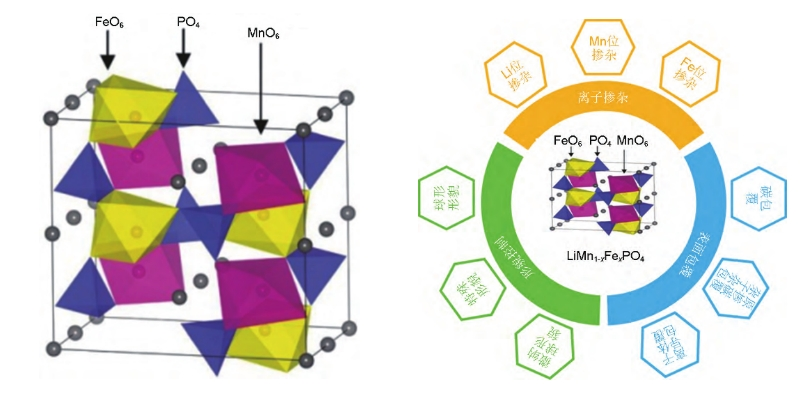
Figure 1 Schematic diagram and modification strategy diagram of lithium manganese iron phosphate (LMFP) structure
The optimization of the above material characteristics has raised higher technical requirements for its pulping process.
Specifically, this is manifested in: firstly, the particle size of the material is further reduced, and more solution is required for particle wetting, resulting in a decrease in the solid content of the material,
and the particles are more likely to aggregate during the homogenization process.
Secondly, the surface of the material is coated with more carbon, and during the homogenization process, it is necessary to ensure that the carbon material in the coating layer is not damaged.
Thirdly, the particle size distribution range of the composite material is wide, and the homogenization process needs to prevent large particles from settling while ensuring complete dispersion of small particles.
Gaogong Lithium Battery has noticed that Hongyun Machinery, based on years of deep cultivation in the field of mixed pulp equipment, has conducted more in-depth research on battery pulp systems.
Adhering to the concept of respecting material characteristics and refusing to manufacture equipment that destroys material characteristics, the Red Transport Pipeline 2.0 Homogenization System has emerged.
It is reported that the second generation pipeline pulping equipment of Hongyun Machinery is based on the PD mixer,
and the kneading process and dispersion process of the PD equipment are separated according to the needs of pulping.
That is, the kneading process and dispersion process are completed separately to maximize the kneading strength and necessary kneading time required for the kneading process.
It can increase the solid content of kneading as much as possible while ensuring sufficient infiltration of active substances, and perfectly achieve the "depolymerization" effect of agglomerated particles,
so that the material can obtain a satisfactory dispersion state.
In terms of specific design, the kneading tank adopts a horizontal design, combined with the stirring blade designed by Hongyun,
which can apply greater mechanical energy to the material without damaging the surface morphology of the material, further improving the kneading effect of the material.
At the same time, the length to diameter ratio of the barrel is 1:1, resulting in a high loading rate. During kneading and mixing, there are no dead corners on the barrel wall, and the kneading efficiency is effectively improved.
The above characteristics are perfectly compatible with the pulping requirements of positive electrode material LMFP. And the mixing blade designed by Hongyun can be pulled out,
which is convenient for equipment cleaning, maintenance, and replacement.
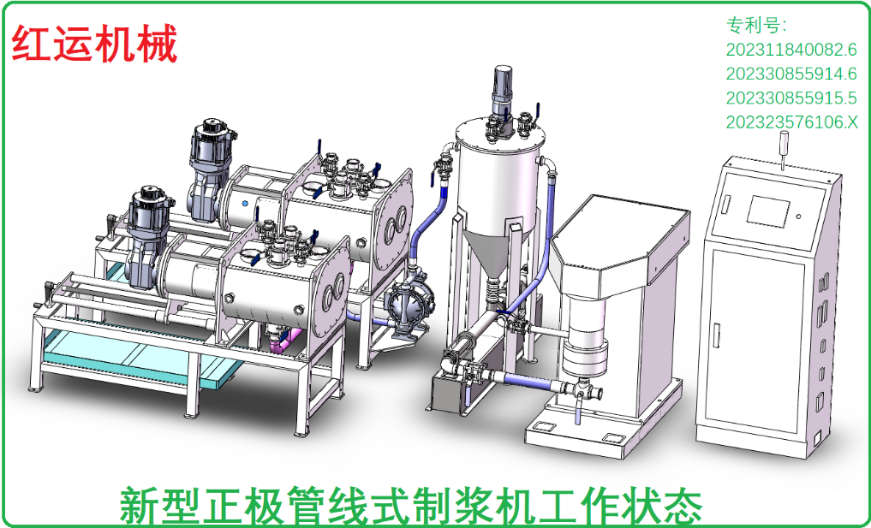
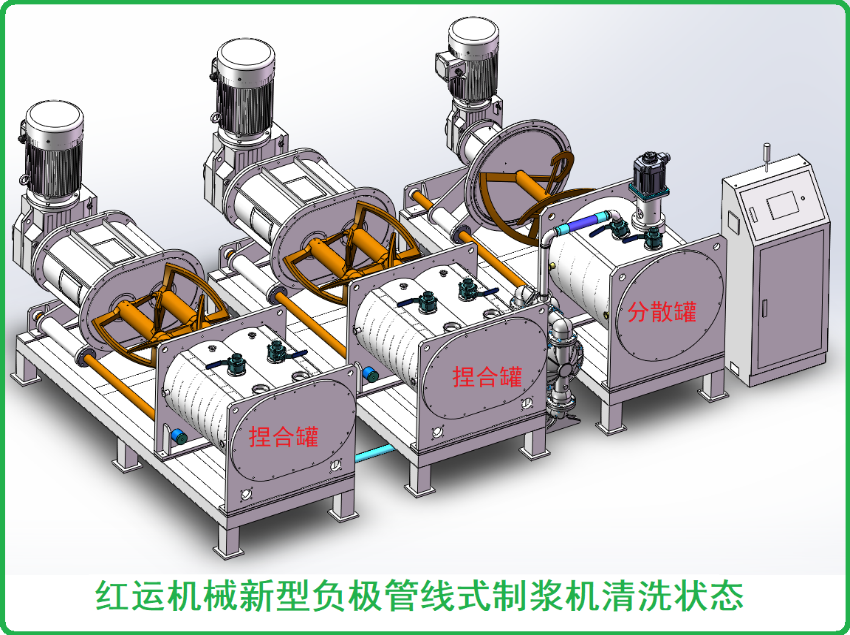
Figure 2 Schematic diagram of Red Transport Machinery Pipeline 2.0 Pulping System
In addition, a separate low viscosity dispersion system can ensure the consistency and uniform dispersion effect of the pulp, which can balance the pulp making concept and scientific pulp processing.
A set of pipeline type, consisting of 2 kneading tanks and 1 dispersion system, can produce pulp in 60 minutes in continuous pulping mode, which is more efficient than traditional pulping equipment.
It is understood that the pipeline 2.0 pulping system of Hongyun Machinery has also received high praise from customers during their actual use.
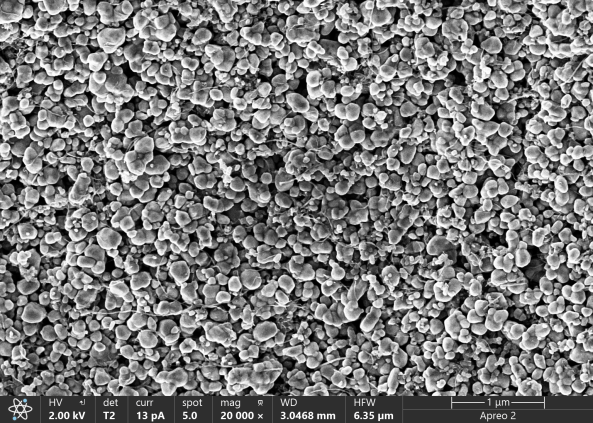
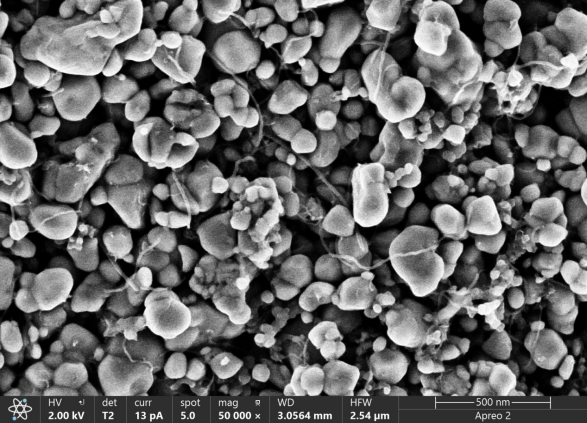
Figure 3 SEM image of lithium manganese iron phosphate electrode
Figure 3 shows the SEM image of the coated electrode sheet made by a well-known domestic battery company using the Red Transport Machinery Pipeline 2.0 pulping equipment.
From the figure, it can be seen that the slurry produced by the pipeline equipment has a uniform distribution of LMFP main powder particles without agglomeration, and the stretching and distribution of CNTs are relatively ideal. The various characteristics of the material are protected, which also shows the advantages of the Red Transport pipeline equipment.
Hongyun Machinery has an independent research and development laboratory, professional slurry testing instruments (such as the American Bole viscometer,
German Thermo Fisher rheometer, French slurry dispersion and suspension performance tester, etc.), and a professional slurry engineer team, which can monitor the performance of the slurry in a timely manner.
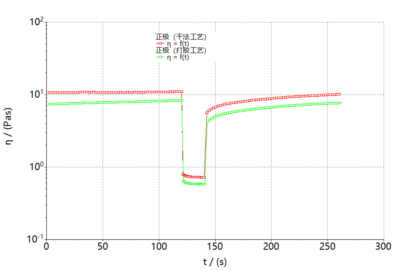
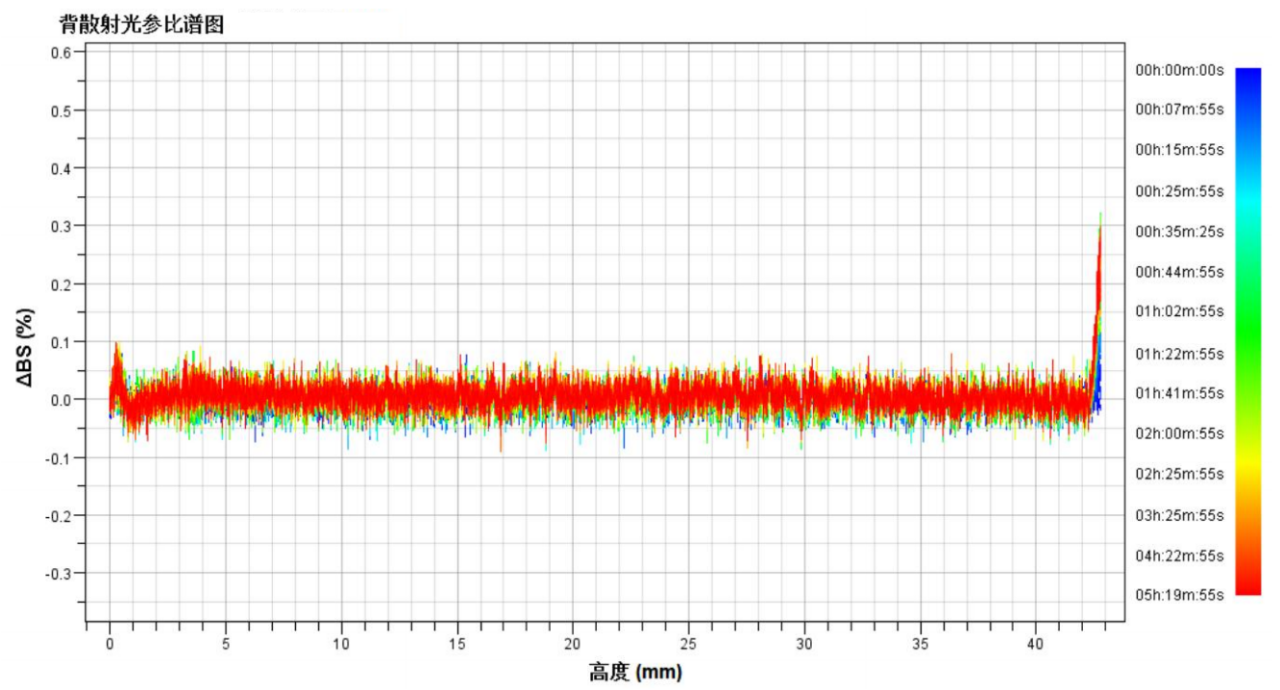
Figure 5 Rheological and Stability Curve of Lithium Manganese Iron Phosphate Slurry
Figure 5 shows the rheological and stability curves of the slurry prepared by LMFP through Red Transport Machinery Pipeline 2.0.
It can be seen that the prepared slurry has typical non Newtonian fluid characteristics and no shear discontinuity.
At the same time, stability testing showed that the slurry has very strong stability, and no particle agglomeration or settling occurred during the testing process.
From this, it can be seen that the second-generation pipeline pulping equipment of Hongyun can fully meet the pulping needs of LMFP.
At present, LMFP materials are increasingly valued by battery companies.
With technological innovation and process progress, the market share will gradually increase in the future, and higher requirements will be put forward for homogenization equipment and systems.
As a leading enterprise in the field of lithium battery homogenization, Hongyun Machinery closely follows the trend of the new energy era, increases research and iteration of equipment,
and occupies an important position in the field of power battery pulping equipment.
Its technological breakthrough and market positioning in the LMFP battery homogenization process are also expected to enable it to maintain its leading position in future market competition.





